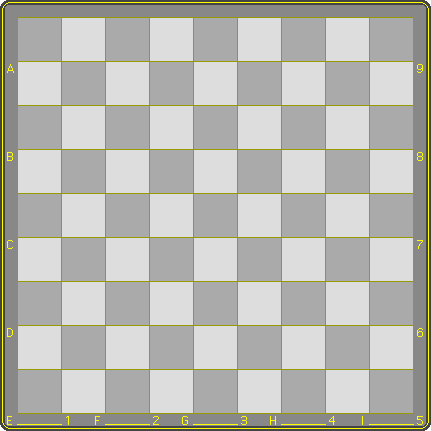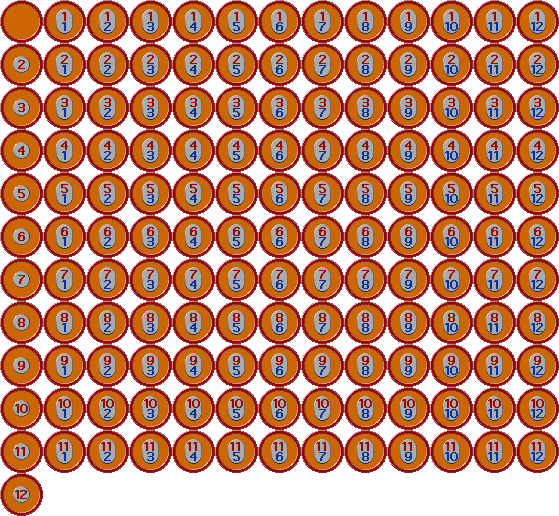Page 2 of 2
EnteringIf a player who still has one or more men 'in hand', has no capture to perform, he must enter a man on a vacant square.
He may not enter more than one man, unless his opponent has all twelve men on the board, in which case he must enter his remaining men as one piece. This piece is called 'the shadowpiece'.
- A player may still have several men in hand while his opponent has all men on the board. This is always the result of one player entering while the other must capture. It is not at all unusual: creating a large shadowpiece is a valid strategic goal.
The crucial restriction on entering
White may not, on his very first move, enter on the central square (e5). Apart from that there's only one condition for entering a man or the shadowpiece alike:
- You may not force an opponent to make a capture during the entering stage, unless the position is one in which the opponent would have to capture anyway, if it were his turn!
This is the key rule governing the entering phase. A player is free to enter on any vacant square, regardless of whether or not it is a 'feeding' move, only if the opponent already attacks one or more of his pieces and thus would have to capture anyway.
| ||||||||
In this example black on his seventh move takes a risk by attacking white. In the already crowded position, white - now released from the crucial restriction - takes over the attack.
On the tenth move it's black's turn to have no restrictions on entering (since he now is under attack himself).
Now 10...g6, forcing white to the majority capture 11.h6d4x appears to be black's best option, but after the position has come to rest, black's piece of two and shadowpiece of two are outweighed by white's piece of four.
Admittedly white's weak piece appears to be more isolated and thus more vulnerable than black's, but as a whole and for the moment the position is favorable for white.
This example shows how explosive the entering stage in a game of Emergo can be if players attack! In 'Strategy' you can read why it is usually black who attacks.
Movement
If the player to move cannot make a capture and does not have any men in hand, he must move a piece to an adjacent square. There are no restrictions except that the square must be vacant.
Draws
The following situations constitute a draw:
- A player has at least one piece left on the board, and cannot move.
- A forced cycle of moves, usually induced by one player, that cannot be broken by the opponent.
- Mutual agreement.
A totally blocked position is easy to construct, but rare in actual play. Forced cycles are even more elusive. A situation in which every vacant square, if entered upon, would induce a capture while the opponent does not attack any of the entering player's pieces, cannot arise.
These were the rules. Now you know how to play Emergo ... almost.
How I invented ... Emergo
Using the Emergo applet
External links





